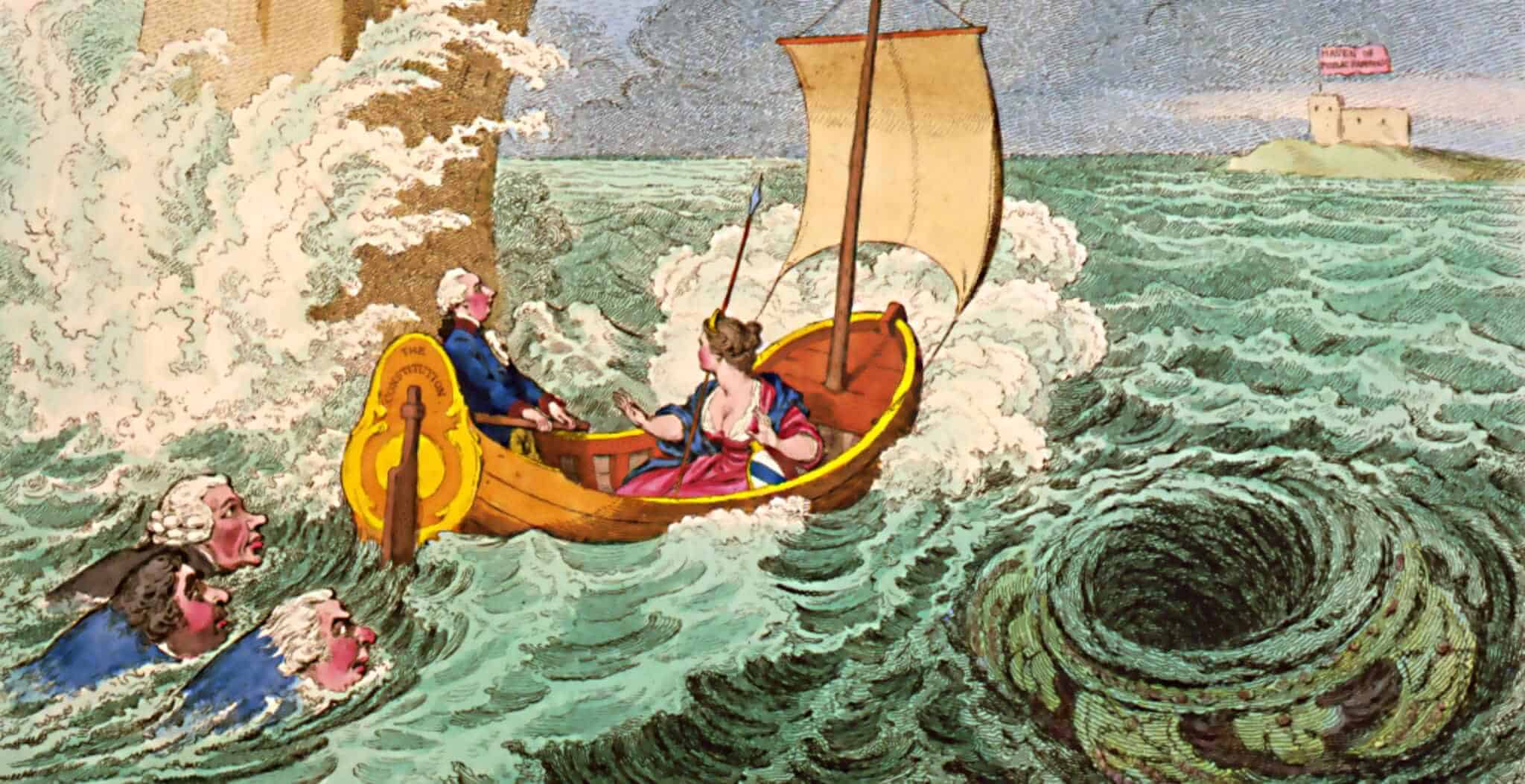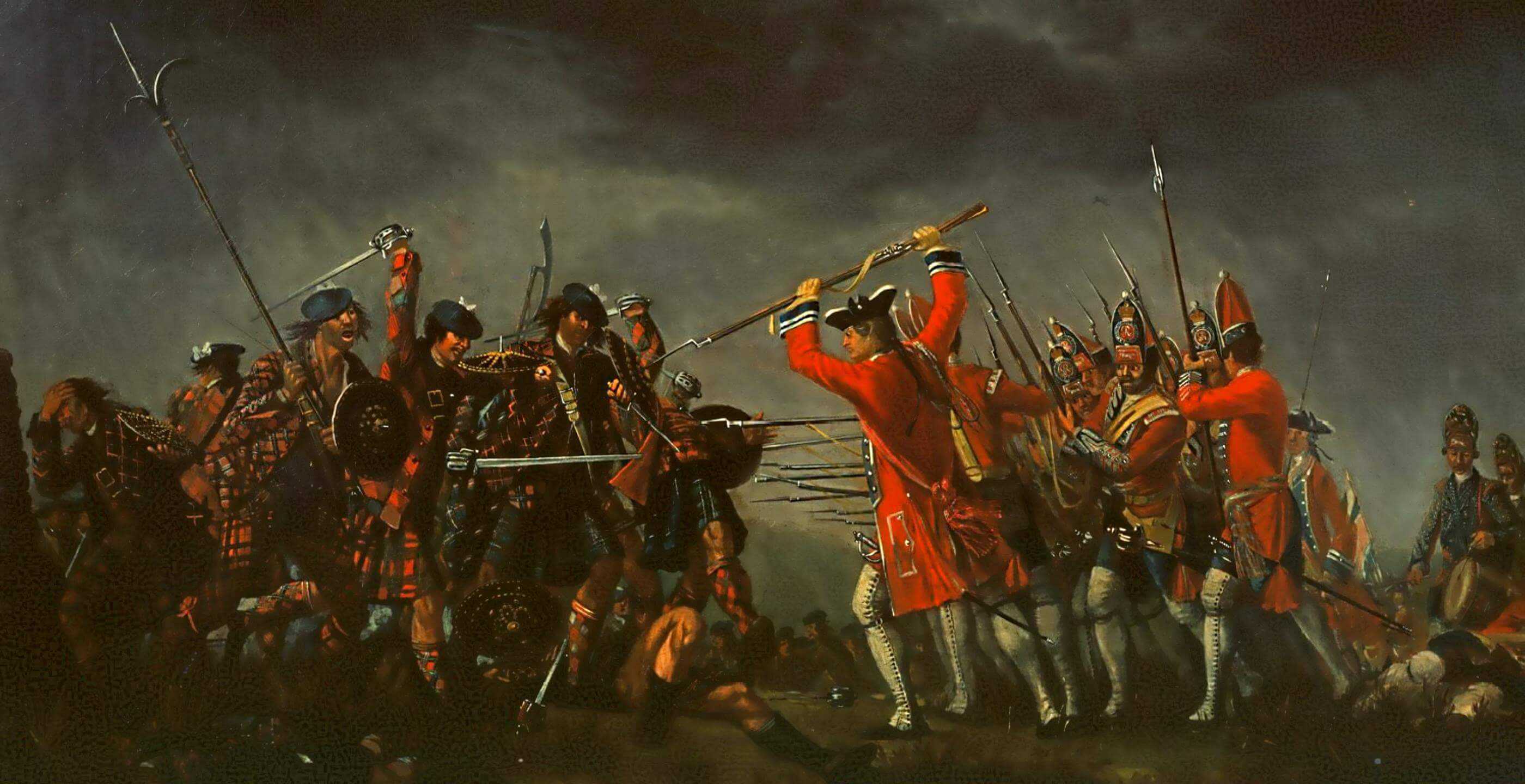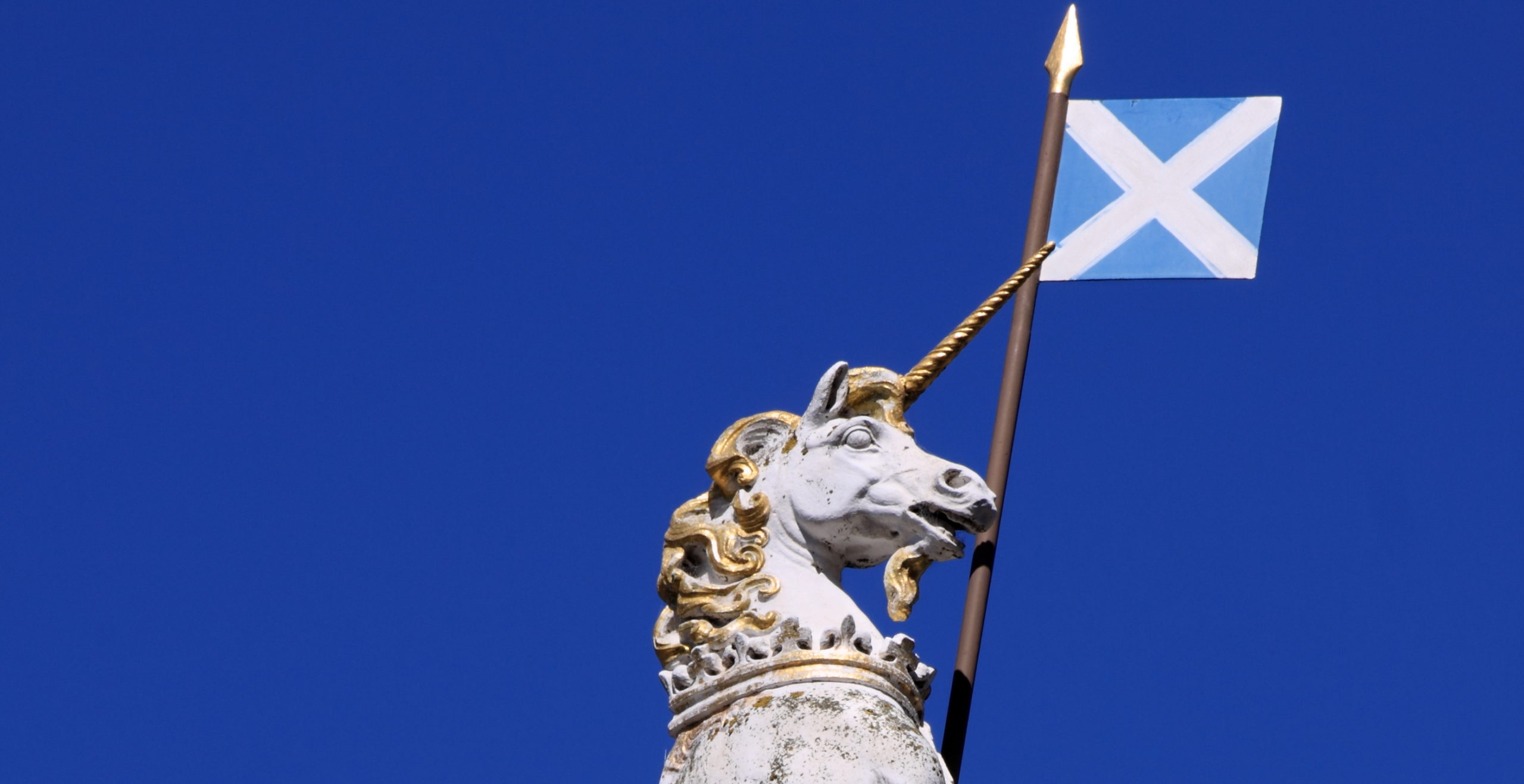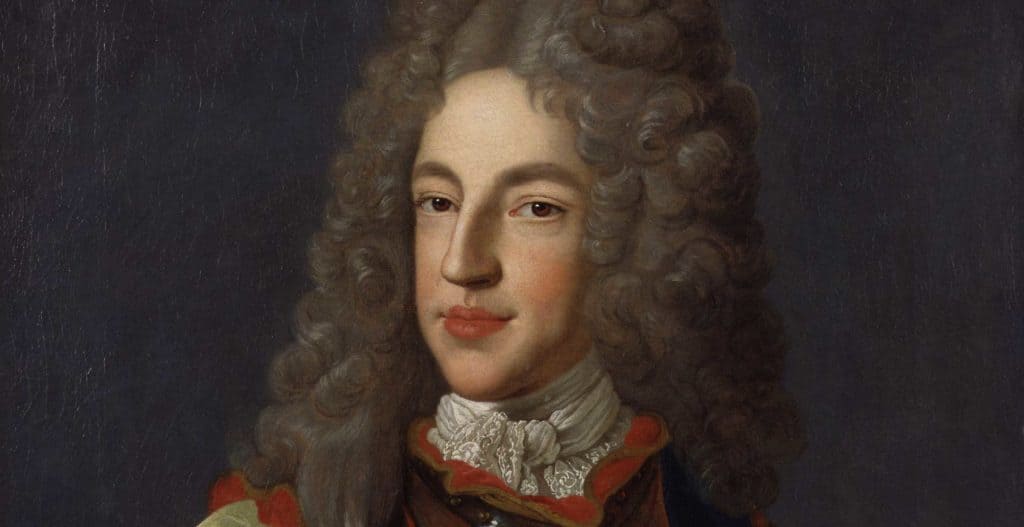Ever wondered why Scottish folk prefer to sing the words to the recently written Flower of Scotland rather than the traditional national anthem God Save the King? Could it have something to do with a little known verse, added sometime around 1745 as a prayer in support of Field Marshal George Wade’s British army…?
Lord grant that Marshal Wade
May by thy mighty aid
Victory bring.
May he sedition hush,
And like a torrent rush,
Rebellious Scots to crush.
God save the King!
So who was this Marshal Wade, and who where the ‘Rebellious Scots’ that he was crushing?
 Marshal Wade was in fact the British Field Marshal, George Wade. George was born in 1673, the son of Jerome Wade of Kilavally, Westmeath in Ireland and he entered the British Army in 1690.
Marshal Wade was in fact the British Field Marshal, George Wade. George was born in 1673, the son of Jerome Wade of Kilavally, Westmeath in Ireland and he entered the British Army in 1690.
Rising quickly through the ranks, Wade became captain in 1695. In 1702 he served in Marlborough’s army, earning particular distinction in the assault on the citadel of Lk’ge and in 1703 he became successively Major and then Lieutenant-Colonel in his regiment.
Wade again distinguished himself at the Siege of Alcantara in 1706, when in a rearguard action at Villa Nova his two battalions repulsed twenty-two allied squadrons.
He had now risen to the command of a brigade and in January 1708 he was promoted Brigadier-General in the British Army. Following the great battle of Saragossa in August 1710, he was promoted to the rank of Major-General and given a command at home.
The Jacobite rebellion of 1715 saw Wade in his new role of military governor. He twice helped foil Jacobite conspiracies, and even had the Swedish ambassador in London arrested.
In July 1724 General Wade was sent to Scotland on a military mission for George I. In the uncertainty following the 1689 and 1715 Jacobite Risings, he was tasked to ‘inspect the present situation of the Highlanders’ and to ‘make strict inquiry into the last law for disarming the Highlanders’.
Wade reported back that the majority of Highland men able to bear arms were ready to do so against the Crown. George I immediately appointed Wade Commander-in-Chief of North Britain and he began to organise Crown garrisons in the Highlands.
Wade’s plan was to mobilize his soldiers throughout the Highlands, quelling, disarming and forming allegiances with the clans as he went. To do this he needed to be able to move his troops quickly, and by the summer 1725 the first military road was under construction.
Between 1728 and 1730 Wade’s men built the road from Dunkeld to Inverness, connecting Perth and Inverness.
In 1730 the road connecting Stirling with Inverness was constructed. Passing from Crieff through the Sma’ Glen and Aberfeldy and on to Loch Tummel, the road’s line remains the same today. With the road complete, Wade needed to bridge the River Tay at Aberfeldy.
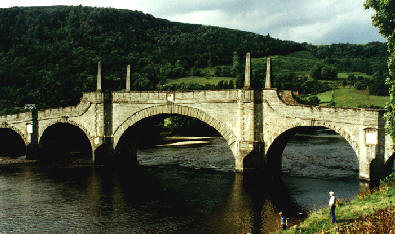
Construction of the Tay bridge began in 1733 and although it was completed in under a year, Wade wrote ‘The Bridge of Tay …was a work of great difficulty and also much more expensive than was calculated.’ At a cost of over £4000, the bridge became the most expensive item on Wade’s road building programme.
Promotion finally ended Wade’s work in Scotland and he left the Highlands in 1740, handing over the road-building projects to Major William Caulfield.
In the course of this engineering work, Wade had supervised the construction of no less than 240 miles of roads and 40 stone bridges. At the same time, slowly and with the tact and experience of a seasoned campaigner, he had also disarmed the clans. By 1739 Wade’s Highland militia had become the Black Watch, a regular regiment of the British Army commemorated by a memorial beside Wade’s fine Tay Bridge.
It was in 1743 that Wade gained the rank of Field Marshal and in this same year he commanded the British contingent in Flanders. The campaign did not go well and Wade, who was seventy years of age and in bad health, resigned the command in March 1744.
Wade returned to England where George II made him Commander-in-Chief of England, and it was in this role that he had to deal with the Jacobite ‘Forty-Five’ rebellion. After failing to anticipate Charles Edward Stuart’s invading army arriving via Carlisle rather than Newcastle he retired in favour of Cumberland, or as the Highlanders would remember him ‘Butcher’ Cumberland.
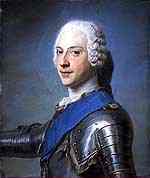
Charles Edward Stuart, also known as ‘Bonnie Prince Charlie’
And so perhaps understandably the Scots prefer to remember an earlier battle, one remembered in the words of Flower of Scotland, written by Roy Williamson of “The Corries”, but that is another story…
O Flower of Scotland,
When will we see
Your like again,
That fought and died for,
Your wee bit Hill and Glen,
And stood against him,
Proud Edward’s Army,
And sent him homeward,
Tae think again.
Possibly a twist of irony then to note that it is claimed that the first public performance of the God Save the King national anthem is said to have taken place in London in 1745 …
1. God save our gracious King,
Long live our noble King,
God save the King!
Send him victorious,
Happy and glorious,
Long to reign over us;
God save the King!
This text and tune is often credited to Henry Carey in 1740, although there is some controversy surrounding this claim.
According to one French encyclopaedia, Quid, the music is in fact by one Jean-Baptiste Lully. It was loosely based on a hymn sung when the French King Louis XIV opened the educational institution at St-Cyr in 1686; his mistress, the Marquise de Maintenon, had commissioned Lully to write the tune to be sung by the pupils.
The French apparently did not use the hymn again until 1715 at which time the Old Pretender, claiming to be King James III of England, was organising his rebellion from France. Madame de Maintenon is said to have presented him with the words and music as his national or royal anthem.
It is unclear who wrote the English words, but it is believed that Madame de Maintenon either wrote them herself or commissioned them. It is also believed by some that the song was sung for the first time in Britain when Bonnie Prince Charlie landed in Scotland so starting the ‘Forty-five’ rebellion.
So what’s it to be, Flower of Scotland or God Save the King?



